Mikael Kuronen - DensDeck® StormX™ Prime Roof Board Stands Up to Very Severe Hail - PODCAST TRANSCRIPTION
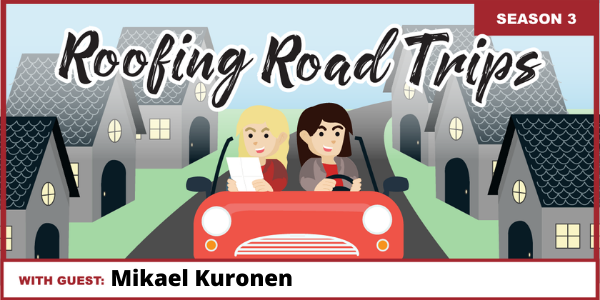
Editor's note: The following is the transcript of an live interview with Mikael Kuronen of Georgia Pacific and Heidi Ellsworth, RoofersCoffeeShop Owner. You can read the interview below, or listen to the podcast.
Announcer:
Welcome to Roofing Road Trips with Heidi. Exploring the roofing industry through the eyes of a long-term professional within the trade. Listen for insights, interviews, and exciting news in the roofing industry today.
Heidi Ellsworth:
Hello and welcome to another Roofing Road Trips at RoofersCoffeeShop. My name is Heidi Ellsworth and I am here today, we're going to talk about some great innovation. Some products that are truly protecting buildings everywhere, from very severe hail, from all nature can send at them. So I'm really excited today to be here with Mikael Kuronen, the director of Product Management for Georgia-Pacific. Welcome Mikael.
Mikael Kuronen:
Thank you. Thank you very much.
Heidi Ellsworth:
I'm excited to have you here today and talk about DensDeck. I mean, everybody knows DensDeck but you really have some great product innovations with DensDeck StormX Prime Roof Board and a lot that's going on out there. So I know that our listeners are going to be very excited to hear about the product and how they can use it in their business.
Mikael Kuronen:
Great, looking forward to talking about it.
Heidi Ellsworth:
Yeah. So first, before we get started, I always like to have you, if you can, introduce yourself and talk about your role at Georgia-Pacific?
Mikael Kuronen:
Sure. As you said, Heidi, my name is Mikael Kuronen and I'm currently the director of Product Management for our commercial roofing products at Georgia-Pacific. I have been with GP for 23 years, so I'm the proud [inaudible 00:01:48] of the University of Colorado at Boulder, where I studied chemical engineering. And I actually started with GP as an intern back when I was in school and then went to GP full time as a process engineer at our Plattsburgh, New York mill. So my background actually came through our consumer product manufacturing group and then from there I went to Atlanta to join our corporate consumer products group. And then from there I came over to building products in 2013. So I am not a native of the building products world but have spent the last eight or so years now working in building products. And so-
Heidi Ellsworth:
I tell you what there's so much going on out there right now with building products too, it's a great place to be. As we've been seeing so much great innovation coming out. In fact, I was hoping that you could tell us a little bit more about what I mentioned earlier, the DensDeck StormX? How did it come about? Have you been involved with it throughout this product launch and innovation?
Mikael Kuronen:
Yeah, absolutely. I mean, DensDeck StormX is my baby. This is like a perfect example of how we like to look at taking things from a market-based need approach. And so we looked at StormX directly as the result of a change in the market. In this case the market change was the result of FM introducing a new classification for hail-resistance and that was their new extreme very severe hail classification that they introduced in 2018. And so based on FM they were saying that they made that change to react to significant increases that they had been seeing for years in insurance claims for hail related losses and damages. They were especially concerned with the increase in occurrences in what they define as very severe hail or hail stones over two inches in diameter. And so when this new classification came out, when you look at the math and what it says the impact [inaudible 00:03:55] are, it's nearly four times the impact resistance that's required for a roofing system to be able to stand up to this sort of impact, compared to what was before the previously severe hail impact resistance requirement that FM had.
And so the other big difference was this was actually launching ice balls, as opposed to the old steel ball drops, and these were impacts that happened at over 100 miles an hour. So it's a very violent test and very challenging to roof systems. So we quickly were understanding that no current roof systems were meeting this requirement or none of the conventional single-ply assemblies especially. There was multi-ply systems that were doing it but even there it was not a given, it was very small percentages that were passing this test.
And so what makes this classification even more challenging, when we started evaluating, just trying to understand doing a product run through this to get an idea if you're working on products that are going to have a chance with this but it's not just one test, it's a brutal series of tests that very few conventional systems were ... The test was designed so that systems should not be able to pass, is the most systems. Even systems that have been considered hail systems in the past, systems that had rigid cover boards. Even [inaudible 00:05:22] to meet the new requirements and those include systems that had our products in them. So when we got that feedback from system manufacturers, and we went out and did some of this testing on our own, we realized this was a big problem and one that really needed to be solved for single-ply systems. So what-
Heidi Ellsworth:
Yeah.
Mikael Kuronen:
Sorry, go ahead.
Heidi Ellsworth:
Oh no, I was just going to say it's so true because, I mean, we have so many squares, and squares, and squares of single-ply out there that needs this kind of support to be able to really stand up to the elements. You talked about EONIC technology and how does that work within what you've been doing?
Mikael Kuronen:
Yeah. So EONIC technology was sort of the previous market-based innovation that we launched, prior to StormX, for the DensDeck family. And so what was leading into the development, of EONIC technology, is we had done a lot of research with commercial roofing contractors and consultants, and we had been having a lot of conversations with building envelope experts. And the thing [inaudible 00:06:30] continue to tell [inaudible 00:06:31] that moisture performance of building materials, and especially those that go into low slope roofing components because of just the nature of the compact sandwich designs that those systems are, that the moisture performance of those materials really matters. In fact, we had done some research where roofing contractors that were surveyed in 2016, by Ducker Associates, estimated that 18% of single-ply assemblies experience moisture related damage within the first year of installation and up to 50% of single-ply roofs have some sort of moisture related problem after the first 10 years. And so what the building envelope guys were saying is the reality check is that roofing systems get wet.
And so the other thing that's been changing over the years is the way we construct roofs and the way we construct buildings. The drying mechanisms that we used to have, to protect us, are becoming a thing of the past. Buildings are getting tighter; you have more air and vapor retarders; higher R values, which means more layers of insulation and thicker layers of insulation. And all of these things make walls, and roof systems especially, harder to dry out if moisture gets into these places. So the roofs that used to self-dry in the summer are now just becoming a less and less common thing. So all of these things were telling us that this is a problem and it needs to be dealt with. And you need to have moisture-tolerant materials that go into your product, into your systems. And so these insights, in addition to others, led to the development of EONIC technology.
And what that technology did was it significantly enhanced the moisture-resistance of DensDeck Prime, so it actually doubled it versus what the ASTM requirement called for. While at the same time it also improved the mat-to-core bond strength of the product, especially on the backside, so it made the product much more two-sided versus a lot of products have very different performance on one side of the board versus the other. And so this innovation was introduced to DensDeck Prime in 2018. So when we started the development of StormX the EONIC technology manufacturing process was utilized from day one. So the intention was, from day one, to utilize the same technology to provide the benefits of EONIC to StormX. So that had some challenges in itself, in just that it's not the easiest way to make the product but the performance benefits that it provides are absolutely worth it. And that is a GP patented process that we have, so we were very excited to bring that to DensDeck Prime in 2018 and now we're really excited that we can also bring that to StormX now in 2021.
Heidi Ellsworth:
Wow, congratulations. I mean, I can just relate to that so well. When you think about, I mean, cover boards, wood, plywood, which I know is not a cover board, but they do ... The moisture that gets in there just deteriorates it so fast, so being able to stop that, protect the building from moisture intrusion and then also creating this incredible durability against hail, what a great accomplishment.
Mikael Kuronen:
Yeah, thanks. Yeah. I mean, that was really what ... When we heard the issues from system manufacturers, as far as the VSH requirements, and basically single-ply industry was having to utilize OSB and plywood as a cover board. And this was not desirable for our customers and they were very vocal about that to us. And it wasn't desirable for the industry. So that was really what was the genesis that set us out to mobilize our team and get as may researchers that we could to work on StormX. And so StormX, what's great about it, and that was our goal, is to make it as simple a solution as possible. I mean, it looks and acts very much like DensDeck Prime but when you get in and look at the details, and the performance is what really sets it apart. I mean, I like to say it's DensDeck Prime on steroids, just to kind of break it down, but-
Heidi Ellsworth:
I love it. Well so how does that work? I have this picture in my mind and I can exactly see what you're talking about. When you're talking about the FM Global standards for very severe hail, and you said at the very beginning that you had to go through intense testing before and with FM, how is that working now? How are people using those standards? What has been the significance of StormX within this?
Mikael Kuronen:
Yeah. As I mentioned when we were talking about how StormX came about, I mean, it was developed to provide a solution to the single-ply roofing industry that had ... At the time there was very few options for roofing systems that met this new and very difficult VSH requirement. So prior to StormX, especially for single-ply, the options were very limited. And so since the introduction of StormX ... I mean, we just finished the first testing programs in the third quarter of last year, we've expanded the number of approved systems in FM's RoofNav by anywhere from three to a factor of four, maybe even more by now. So we're talking about thousands of additional approved assemblies and design options for designers to choose from to meet the VSH requirements. And there's more approvals that are coming.
So the other key thing was it allowed designers to go back to what would be considered conventional and trusted roof assemblies. And the two key parts of this are being able to adhere a bareback single-ply membrane to the cover board, and to go and to be able to use a traditional cover board instead of using OSB. And so StormX allows designers to have this conventional approach for single-ply roofing systems that will meet the VSH classification.
Heidi Ellsworth:
Wow.
Mikael Kuronen:
So as I hinted to earlier this ... Like you were asking about, the approval process is not for the faint of heart. I mean, it's a bit of a marathon, it takes a while. [inaudible 00:12:44] testing [inaudible 00:12:45] the VSH classification it's an assembly-based test, in involves launching ice balls at 100-plus miles per hour. And it's a three phase test, so first you test an unconditioned membrane built into the assembly. If you do well on that test then you go into a thousand hours of UV [inaudible 00:13:03] for the membrane, the roof cover. And then you build your assembly and test that. If you do well on that test, and you pass that, then you go to a membrane that's undergone a thousand hours of UV weathering and a thousand hours of heat weathering.
So if you get through all of that ... And if you fail anywhere along the way you're back to square one, but if you get through all of that it's roughly six months to get an assembly from the first test to a final approval. And that's assuming that you pass all three tests. So the process takes a while and that's only if it goes well. So it's quite the marathon and quite the process but now that those approvals are out there it significantly has increased the options, like I said, for folks to look at how they want to build a roof. And we're looking at further expanding those approvals and those options with more testing.
Heidi Ellsworth:
Wow. And this may be an obvious insight or question, but you have to do this with every different manufacturer and all the different types of single-ply roofing out there to get every assembly approved, so that's ... Like you said, they just keep coming out but that's a long ... There's a lot of testing going on.
Mikael Kuronen:
There is and that's what makes it very ... It's not the type of where you can identify critical components, and go and get a lot of approvals by just if you can find the critical assemblies, and test the way you would do uplift testing at FM, it's very different for the VSH. Where yes you have to test each cover with each adhesive and substrate combination in order to get the approvals for those type of systems. And, like you said, for every different membrane type as well. There's a lot of work still to be done out there and so we've been focusing on trying to have those communications with our customers, to make sure that what we're testing is things that are going to be of value to them for the type of approvals that they get. And we've had a lot of collaboration and partnership there from a lot of folks, so it's been a great process.
Heidi Ellsworth:
Yeah. That just gives me such faith because I think, from a roofing contractors and roofing companies perspective, they want to know that products are going to work. I mean, what they're doing, installing it and working with the building owner or facility manager, they want to be able to say, "Yes, this is going to work." So to be able to have this kind of research and testing already done, in their pocket, that's huge for them.
Mikael Kuronen:
Yeah. And the process of just bringing this about it was really an all hands on deck. Once we got our leadership aligned to the need for this in the industry our business president really through the ... He basically through a lot of horsepower at this. It was a fun project to work on, to suddenly have all the all stars helping me bring this to life. And our R&D team just ... I mean, a lot of this was done in all the chaos of COVID that was going on too and all the shutdowns, and delays, and the difficulties in making things happen, and not being able to travel for the testing, and trying to do these things through video. It was just an amazing accomplishment that the team did what we did as quickly as we did, and developed a solution that we think is simple and very effective. And, not only that, we think it has a lot of potential applications beyond just very severe assemblies and the benefits associated with very severe hail.
Heidi Ellsworth:
Yeah. We know. I mean, Mother Nature's throwing everything at us right now. We need all the help we can get, protection-wise. You know what? That really leads me into the next question, Mikael. There are some contractors, and I think there are some building owners or facility managers, or maybe even architects, who may choose not to use any type of cover board. I've talked with this with other folks, can you share why that's not a good idea?
Mikael Kuronen:
Yeah. I mean, depending on the building and depending on the intended use, and there's a lot of factors you consider, it could very well be a perfectly fine idea. But in general we would say, and I think most people that manufacture cover boards would say, that you add a cover board to any roof system you're going to make the roof system better. The question is not every roof system may need it but you need to consider the benefits you're forgoing, and the increased risk that you're placing on your roof system, and to the owner and/or the tenants of a building, if you choose not to do that.
Like I said, it'll depend on things like your building type; what's inside of your building, especially things like how valuable are the contents or how valuable is the business, or the operation, that's going on inside of the building? Is there disruptions to anything that could be tolerated? If it's a hospital probably not. If it's a data center those would be bad things if you had problems. But if it's a fairly unheated warehouse and it doesn't have materials that are of any kind of high value inside of them it may be perfectly fine. But also things like how long does the owner plan to keep the building? Are they investing in the property as a long-term owner or are they just looking to keep the property for a few years?
And then the critical things that any designer would ask is what are the type of weather risks? What is the local climate and geography to ... What sort of issues might the roof and the roofing system face? Are you near the coastline in the Southeast, where you have a higher chance of wind and hurricanes, and flying debris that would come with those type of storms? Or like talking with StormX, are you in hail country? Is VSH performance something that you may need? Do you have a lot of equipment on your roof that'll result in maintenance related traffic on your roof? This is a case for roofs in any geography. So if you've got equipment on your roof, which two out of three low slope roofs do, that means there's going to be people up there maintaining that roof.
And that's actually ... From a lot of the research and conversations we've been having with our insights group, and contractors, and different folks in the industry, that seems to be the most common occurrence that we hear about is just punctures, punctures, punctures from people getting on the roof, where they access the roof and where they do work on the roof. And so all these are strong reasons to consider incorporating a roof cover board in your roof system because they can mitigate some, and in some cases all, of these risks to some degree.
And then there's also just the value of what the cover [inaudible 00:19:45] to the system. Last year we had an independent third-party company, FMI, conduct a tail to roof assessment, from owners, facility managers, and property owners. And so they collected roof data that was specific to single-ply membrane systems that have been replaced in the past five years. So this was quantitative data on over 120 roofs that was collected and validated through followup interviews, and conversations with the participants. So there was some really interesting results that came out of that. And the most obvious one was the roofs that do not include a cover board can see operating and maintenance costs that are significantly higher than roofs with a cover board.
So think even though you have a lower initial cost of the roof the cost to maintain it and operate it over the lifetime of the roof greatly exceeded what that initial cost [inaudible 00:20:36] cover board system would have. Multiple benefits that the cover boards provided. The benefits were summed up in basically two different things. Is that having a cover board in your system lowered your operating and maintenance costs over the life of the roof. And then that's basically like less leaks and repairs. And then it extended the roof life, so over 20% of the roofs had a significant roof life increase, four to five years. And then, at the same time, you reduce the risk of significant ... Any kind of catastrophic events that happened during the lifecycle of the roof.
So there's so many benefits that cover boards bring, not just in mitigating risk but also in the fact that they actually can improve the return on investment for your roofing system. And we have a lot more information that's going to be coming out on that but that's just a little bit of some of the stuff that we've been doing some research on, and getting some pretty interesting data on.
Heidi Ellsworth:
That is great research. And I know the team over there at Georgia-Pacific and I, we've talked about this, and it's so impressive. I mean, it's so impressive. In fact, we're going to be doing an RLW, our webinar, Read Listen Watch with all of you in April. And that's one of the things that I think is going to be so exciting to talk about, is just how contractors can use this kind of data, this kind of science, to really help building owners get a good roof that actually saves them money or is not going to be as expensive to maintain over the long run. And it's going to last longer. I think those are the type of things that contractors need to be putting into their discussions with building owners. And maybe share a little bit ... I know we're saving a lot of this for that webinar in April, but maybe just a little teaser on how are some of the ways that contractors are doing that?
Mikael Kuronen:
Well, I mean, when you think about just using cover boards in general we think that all cover boards mitigate risks that roof systems face. So when you think about it cover boards are designed to enhance the resiliency and durability of the roof system, and they do that by minimizing the wear and deterioration of other components, most importantly the membrane and the insulation. And so ultimately that extends the available lifespan of the roof. So as the results of that, like I was saying, they can help improve the return on investment for the roof system. So we want to do that, we want to help contractors understand that value that cover boards bring and then how to talk about that value to building owners so they can sell that value, so that they know they're putting in better roof systems and they're giving their clients better roofs.
So when we developed DensDeck StormX it really just takes the durability of DensDeck Prime and takes it to a new level that'll exceed the performance of DensDeck Prime in fire, puncture, wind, and of course hail. So it's back to these things that we were talking about, that really contractors, that are the effective ones ... And we know of several of them that are doing this and they've been begging us for this kind of information, and this kind of research, to help them to have more quantifiable data. But really we know that using cover boards really helps with foot traffic, being the most common source of punctures.
Like I said, it still comes back to the contractors understanding those values, fire, wind, hail, puncture, all that good stuff, and then being able to convey it to the building owners. And having supporting research that hopefully we can provide to them, is that cover boards can improve the return on investment of a roof project. And, again, it's by reducing that operating cost over the lifecycle of the roof and extending the roof life expectancy. And so when you lower that annual cost, it extends the roof life, those are all significant things that improve the overall experience with that roof.
Heidi Ellsworth:
And with the changing landscape in commercial, with everything that's happened with COVID and the different use of buildings, I'm guessing there's going to be more use of rooftops because people want to have a little bit more social distance out in the air. There's just going to be so many changes that we aren't aware of. This is the kind of information that roofing contractors can take to their customers and really differentiate themselves. I think that is so important because facility managements, property management, building owners are going to be looking for solutions like this.
Mikael Kuronen:
Absolutely. I like that there's an interesting way to just kind of break it down as simply as I think we can to put it in perspective, is that in a roof system with a cover board the cover board is roughly 15% of the roof's material cost, and roughly 10% of the overall roof cost if you include labor and materials. But then you consider the overall roof cost accounts for about 5% of the total building cost, so if you do the math on percent on a percent that would mean the cover boards about .5% of the building cost. Yet, when you look at the roof it represents over 50% of all construction litigation cases. And then also consider that over the life of the building, on average, 77% of capital expenditures for fixing and maintaining the building go to fixing the roof. So just a simple key takeaway is spending a little more money on a good roof will save a lot of future, potential, construction related headaches.
Heidi Ellsworth:
Yes.
Mikael Kuronen:
And adding a cover board to your roofing system will make your roofing system better. And if you add the right cover board it'll pay for-
Heidi Ellsworth:
Right, it protects you and your customers.
Mikael Kuronen:
Yeah. And if you had the right cover board it'll pay for itself and more.
Heidi Ellsworth:
Yeah. Wow. This is so exciting, I love this. I love not just the new product innovation but the data that's coming with it, it's so powerful. And I think it's going to make such a difference on commercial roofing and commercial roofing systems. I mean, like you said, beyond hail. Hail is just the first step. When we look at what we've gone through in the Pacific Northwest this winter; what people are dealing with, with hurricanes, and ice, and everything else, it's a crazy world out there right now. Not even start mentioning all the traffic and everything that's happening rooftop nowadays. So what about, Mikael, where can contractors get more information and start incorporating StormX into their roofing systems?
Mikael Kuronen:
Yeah. So DensDeck.com is an obvious place where you can go to our website, you can reach out if you can locate your local DensDeck sales representative. We have a 1-800 number you can reach out to too, where we can help you get ahold of your representative. But yeah or there's any way that you can find someone that's associated with DensDeck, you can look me up. My name is Mikael Kuronen, I'm in LinkedIn. Yeah, we're happy to talk about it and answer any questions that folks may have about StormX or any other DensDeck products.
Heidi Ellsworth:
For all of you out there Georgia-Pacific has tons of information now on RoofersCoffeeShop also, so that will ... To get you to the DensDeck site, to get to the sales people, get to the Directory on RoofersCoffeeShop for Georgia-Pacific. You're going to learn more about DensDeck, about StormX, about everything that they're doing. And contact information to get ahold to find out where you can get it in your area, what systems are approved, all that good stuff. Because really if you're not using or sharing this kind of science and this kind of installation techniques with your building owners your competition is going to be, so you want to be sure to get out there and take care of all this.
And I would really love to have everybody listening to this be sure to attend the webinar on the last Wednesday of April. So that is going to be where we're really going to get into how do you use this in your business? So today you learned about what it is, and all the cool things that are happening at Georgia-Pacific with their innovation and product development. And that's, we're going to say, really spend a whole hour helping you work your way through that.
Mikael any last thoughts? I mean, for the contractors, for the people listening out there, on your StormX and everything that's happening on this move with very severe hail?
Mikael Kuronen:
No, just if ... I mean, if you live in the very severe hail region and that's a problem that you face please look up DensDeck.com, get more information on StormX and reach out if you have questions about it because we really think it's a great solution to the problem, and we'd love to answer any questions that you might have. But there's more information to be coming on StormX. We believe there's also some pretty good applications for high wind areas in mechanically fastened systems, so there'll be more to come on that. Yeah, we're really excited and looking forward to launching other innovative products that we've got in the pipeline that will be coming in the future.
Heidi Ellsworth:
Well we're going to be watching you because this is great stuff. Thank you. This is the types of things that when you ... Your stats about how important the roof is to every single building owner or facility manager out there, these are the kind of solutions that we all need to protect the buildings. So thank you for all of your work, for all your innovation. And thank you so much for spending this half hour with me on a Roofing Road Trips Podcast.
Mikael Kuronen:
Well thanks so much Heidi, I appreciate it.
Heidi Ellsworth:
Well thank you. And thank you everybody for listening. Be sure to visit our Read Listen Watch section of RoofersCoffeeShop.com for all of our podcasts, plus webinars, videos, e-books, you name it. You can learn how and when you want to. I appreciate you all being here, have a great day.
Announcer:
Make sure to subscribe to our channel and leave a review. Thanks for listening. This has been Roofing Road Trips with Heidi from the RoofersCoffeeShop.com.

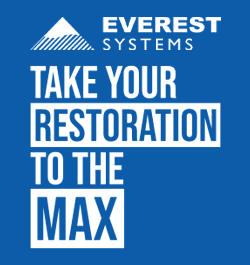


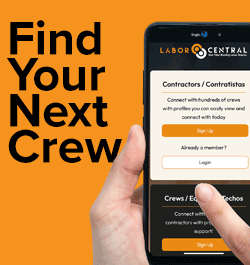








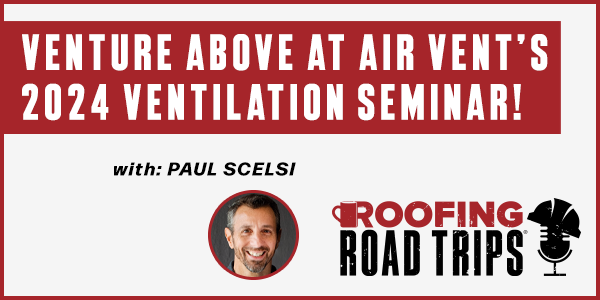
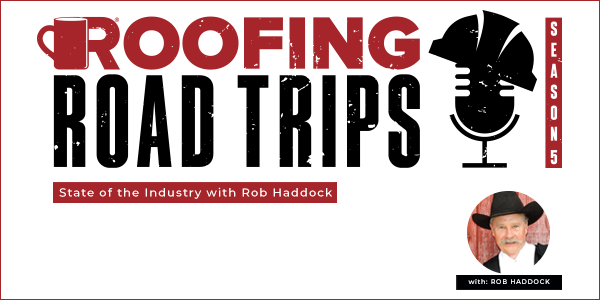
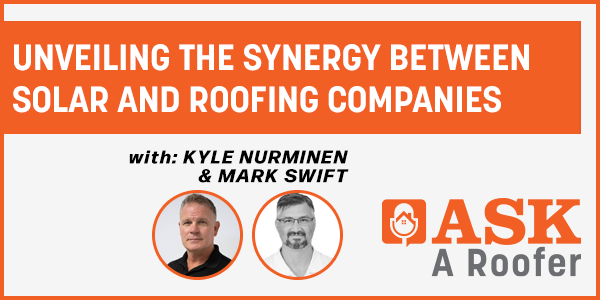


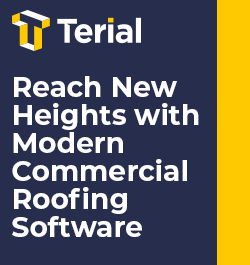



Comments
Leave a Reply
Have an account? Login to leave a comment!
Sign In